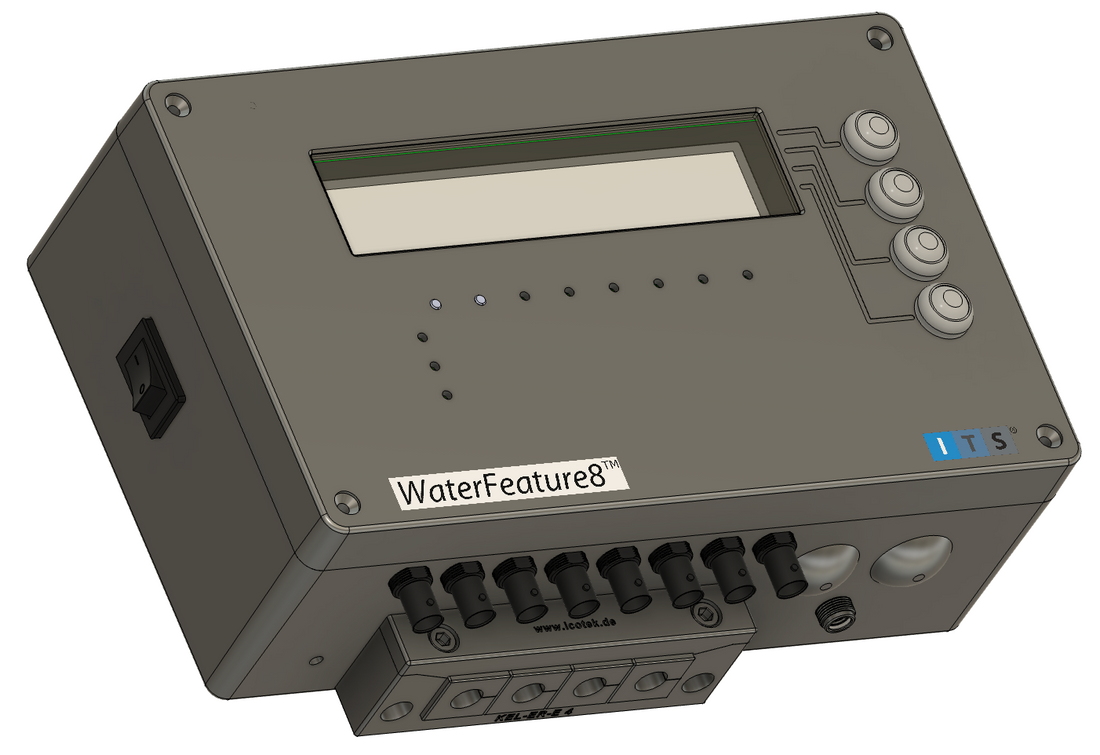
In the Pipeline
Share
It's been 9 months since we last posted, and we've been very busy. Here's a brief list of all the projects we've been working on:
- Design for the 4th Generation WaterFeature8 system, now in prototype stage.
- Design and prototype for a new Analog Input Circuit.
- Design and field trials for a new hotbox controller for KM International.
WaterFeature8 Gen4:
The WaterFeature8 Gen3 was a big leap ahead for us. We added some great features that customers really liked. Many of those features were customer requested, so if there's something you'd like to see on a new WF8, let us know!
The Gen4 units will have similar function as the Gen3 except in an all new IP67 rated, powder coated cast aluminum enclosure:


We will no longer offer Serial Only and Serial+Analog units. Instead, Each unit will be base equipped with serial outputs (RS-232 and RS-485), and addition capabilities such as Analog Outputs can be purchased as an expansion card. This solves the problem we had with Gen3 where we used high precision DACs that immediately went out of stock (Covid) and weren't available for two years.
We have prototype parts in the shop now and hope to have this unit available in Fall 2024.
Analog Input Circuit:
One of our customers had an idea, what if we could connect 4-20 mA devices to the WF8? We ran with it, and are now prototyping an expansion circuit (similar to an EZO) that will accommodate 4-20 mA input signals.
KMI Hotbox Controller:
This is really exciting project that came to us through my brother. After suffering PLC supply issues a couple years ago, we wondered if there a simpler and less expensive way to control the burner assemblies on his asphalt hot boxes. It turns out, there is:


We mounted the PCB to the back side of the dead front panel, which leaves plenty of room for fuses, a mechanical timer, and the master control relay.
The system is configured with an e-stop for safety, and the e-stop signal integrates with the control circuit.
We explored the possibilities of using a rotary encoder for the interface and it works really slick.
The entire system runs on a 12VDC car battery, and this new control circuit consumes significantly less energy than the previously used PLC.
We are very excited about manufacturing these systems for KMI. Additionally, they save $800 per unit compared to the existing system.